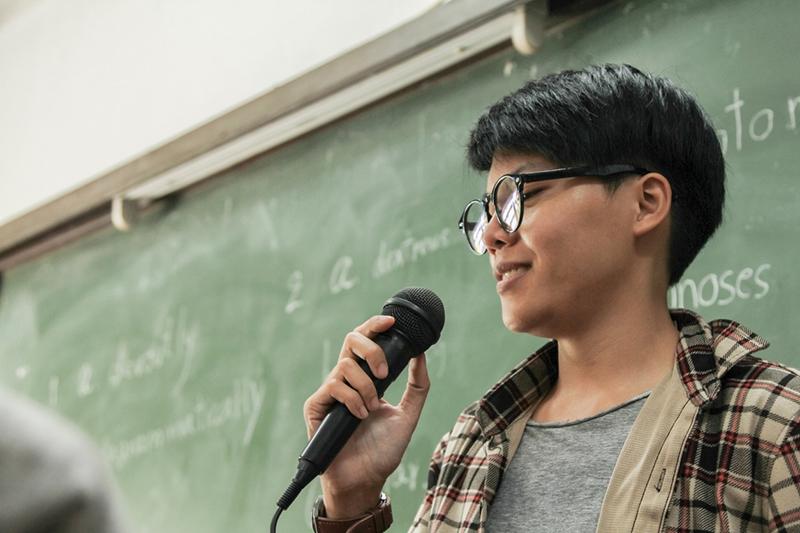
Pluralistic campuses will foster the bridge-builders our divided nations need

Rising prejudice and polarisation are pressing issues in American civic life, and they may have a shared solution: colleges and universities making pluralism a central principle in campus life. Campuses ought to be models for pluralism and launching pads for leaders who can lead in an increasingly divided nation and world.
Pluralism – which we at Interfaith America understand as cultivating respect across differences, building relationships between diverse communities and cooperating on concrete projects with common aims – is core to both the American project and the purpose of higher education. In a pluralistic campus, people with different identities and divergent ideologies learn from one another, work together and build the leadership skills to equip people beyond campus to do the same. Members of this campus community do not expect uniformity of thought, but rather that they will disagree on some things and work together on others. The campus experience expands the boundaries of both their complex thinking and their capacity for empathy; they approach areas of disagreement with curiosity and respect.
In a longitudinal study our organisation conducted with higher education scholars Alyssa Rockenbach and Matthew J. Mayhew, we found that student attitudes towards political conservatives declined more starkly during college than attitudes towards any other identity group. This data point highlights the urgency of our current work. In order to prepare graduates for the diversity they will encounter in their civic and professional lives, campuses must foster a culture where people expect deep ideological disagreements and build the intellectual and emotional fortitude to navigate them productively.
- Respectful provocation: the university skill for our times?
- Talking about taboos: how to create an open atmosphere for discussing difficult subjects
- Spotlight guide: Dealing with division - the polarised university
This research also affirmed that a combination of support (for example, space for spiritual expression on campus) and challenge (such as experiences that bring diverse students together or prompt reflection on one’s assumptions and perceptions) is critical for shaping college students’ ethos of pluralism.
Our advice for institutions to foster civic pluralism is informed by our research and decades of experience in US higher education. These practices define structures, programmes and approaches critical to creating a campus environment conducive to bridge-building across deep differences.
1. Make a presidential-level commitment to pluralism. This can take the form of “Pluralism principles” or a “Covenant for civil discourse” which articulates a commitment to and expectations for how people within the campus community will engage across divides. For example, Vanderbilt University launched Dialogue Vanderbilt to “promote civil discourse and better understand and address political polarization”. Meanwhile DePauw University’s statement on freedom of expression states that one of its goals is “to help our students acquire the skills to civilly debate and disagree – skills that will prepare them to lead”.
2. Coordinate a series of courses on the theory, skills and practice of cooperation across difference. Integrate this content into general education to ensure that all students learn how to be an effective citizen in a diverse democracy. Offer course sequences that facilitate deep learning and leadership development for interested students. Anchor these courses in the intellectual history of pluralism, relevant contemporary research and real-world case studies. For example, the private, Christian institution Spring Arbor University has offered a “Bridging the gap” course with Oberlin College, a secular, independent liberal arts institution. Spring Arbor then incorporated bridge-building skills into interdisciplinary “core” courses required of all first-year and junior students and partnered with a hospital system and schools to bring their approach to bridge-building to the local community.
3. Run a student fellowship for pluralism – a competitive, paid, cohort-based fellowship, scholars or internship programme anchored at the senior level of the institution such as a president’s bridge-builders fellowship. Invest in these students’ intellectual growth, leadership development and skill-building. Charge them with fostering a pluralistic campus culture and partnering with the administration to build bridges when crises occur. For example, the Intercollegiate Civil Disagreement Partnership Fellowship gathers students from five diverse colleges and universities to develop their abilities to engage in and lead conversations about difficult, important topics across political difference.
4. Lead pluralism training during first-year orientation and for all campus staff, faculty and student leaders, thus socialising the entire campus community to the value of cooperation across difference. Focus the training on skills for bridge-building, including listening, sharing stories, dialogue facilitation and navigating tension constructively. For example, Dickinson College’s Dialogues Across Differences programme includes faculty learning communities to help them think critically about how to incorporate dialogical skills into their classes. Doane University is training its diversity, equity and inclusion representatives in bridge-building skills, who then host their own training sessions for colleagues in their department and for student leaders.
5. Plan ongoing pluralism programming such as speaker series, dinner and dialogue events and service projects. Student bridge-building fellows can lead some programmatic elements as part of their leadership development. For example, the University of Virginia’s Karsh Institute for Democracy has created a series of initiatives to support its Talking Across Difference programme.
6. Encourage research that explores the kind of leadership in engaging diversity (vision, knowledge base, skill set and decision making) that key external stakeholders (eg, employers who hire from the university, local institutions such as hospitals who rely on experts from the university) require, and produce knowledgeable graduates who can meet these needs. For example, Middlebury College’s Davis Collaborative in Conflict Transformation works with more than 100 partner organisations worldwide and serves as an incubator for research, teaching and student experiences to address divisiveness in society.
7. Create a proactive strategy for navigating moments of crisis. Who is your leadership team when a crisis related to ideological diversity arises? What are the values and guidelines that help you determine when to issue public messages? What steps do you take to de-escalate the crisis and create space for expression of divergent viewpoints? Developing this team and strategy during times of calm is essential for leading during inevitable moments of crisis.
We encourage campuses that commit to these practices to also be intentional about measuring outcomes, reflecting on progress and refining their strategy as needed to ensure their efforts have impact.
Higher education has a responsibility to meet the urgent needs of our nation, including the contemporary dual crises of prejudice and polarisation. Now is the time for campuses to live up to their promise and model for the nation how we can engage our deep differences more constructively.
Eboo Patel is founder and president of Interfaith America, and Rebecca Russo is vice-president of higher education strategy at Interfaith America.
If you would like advice and insight from academics and university staff delivered direct to your inbox each week, sign up for the Campus newsletter.
Additional Links
Find more practical resources for prioritising pluralism on campus in our recent landscape analysis of bridge-building efforts across US higher education, in our piece on why campuses need centres of pluralism and through our Bridging the Gap programme.


